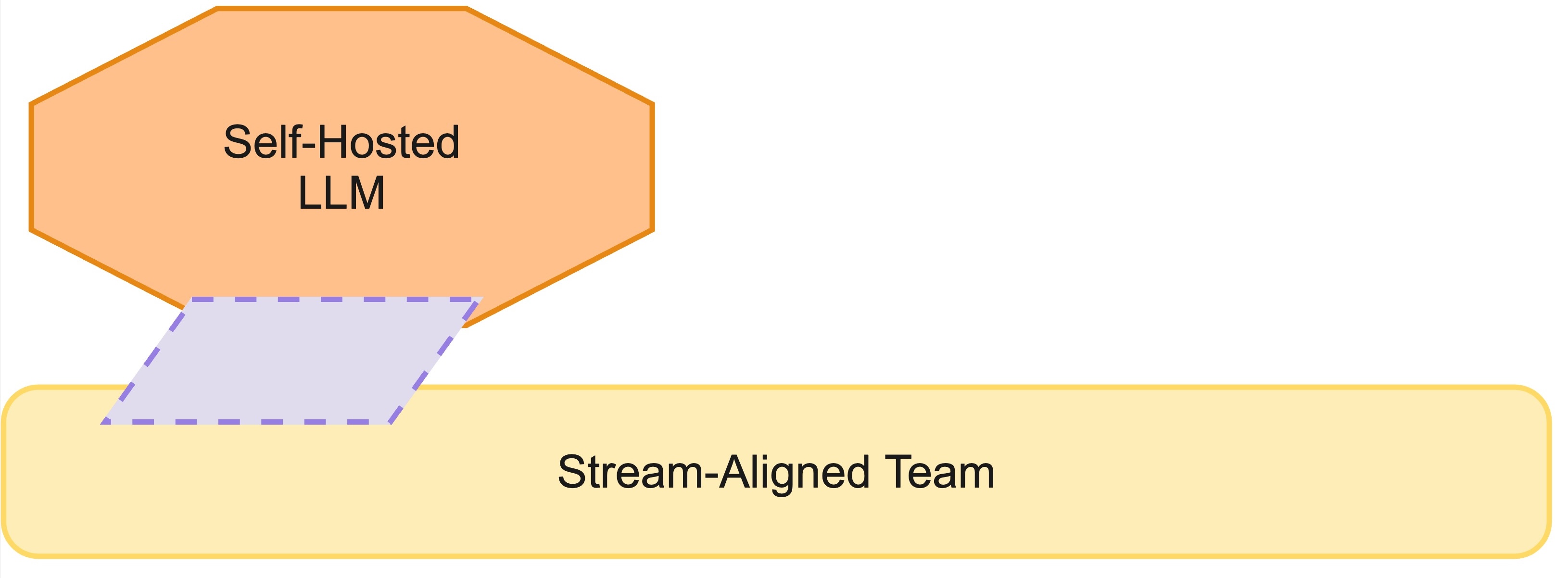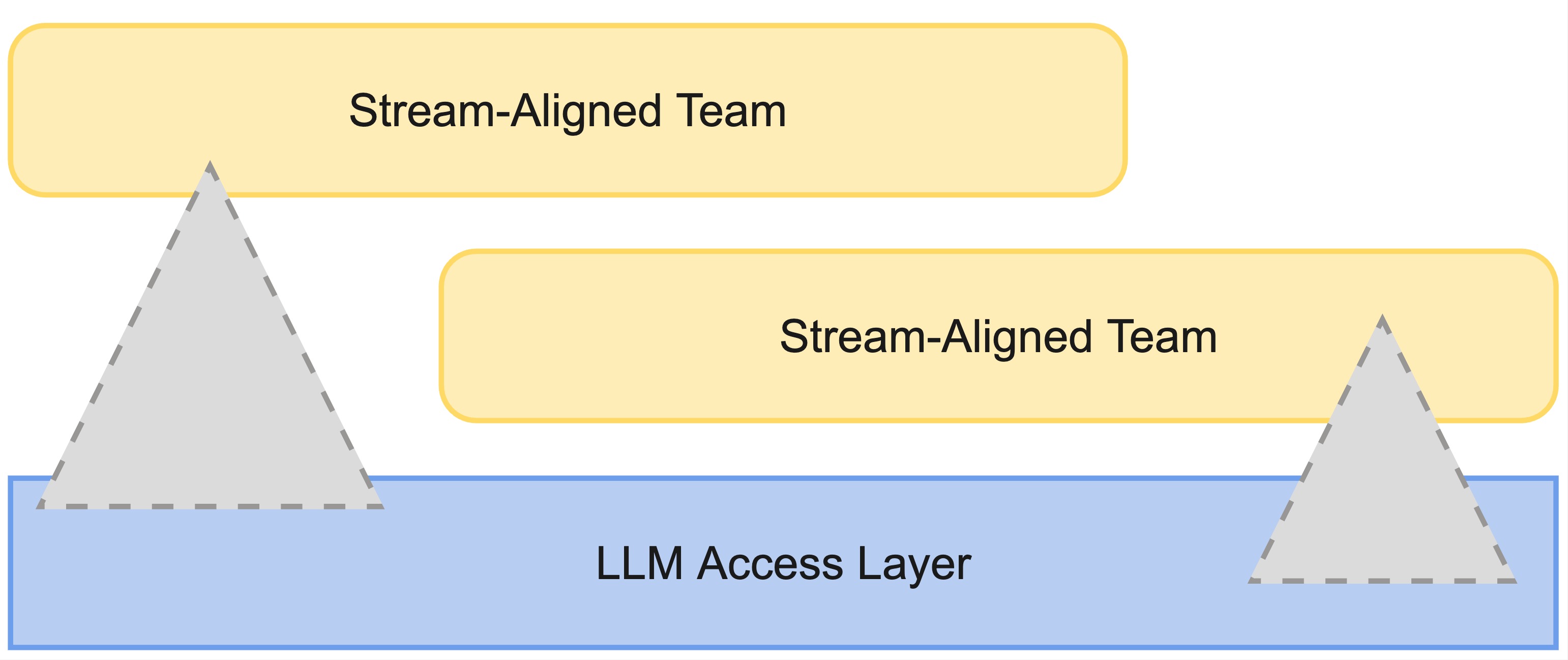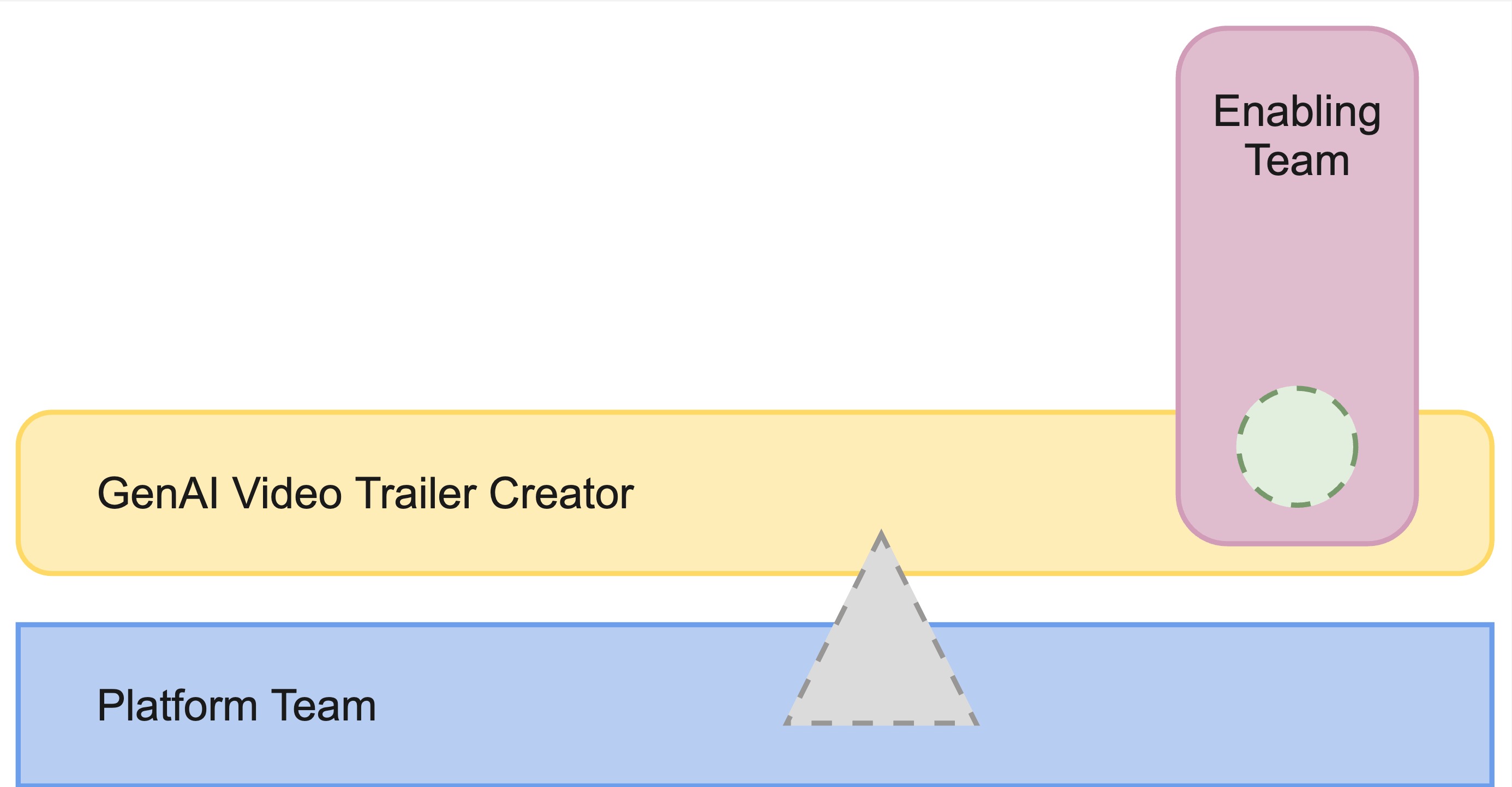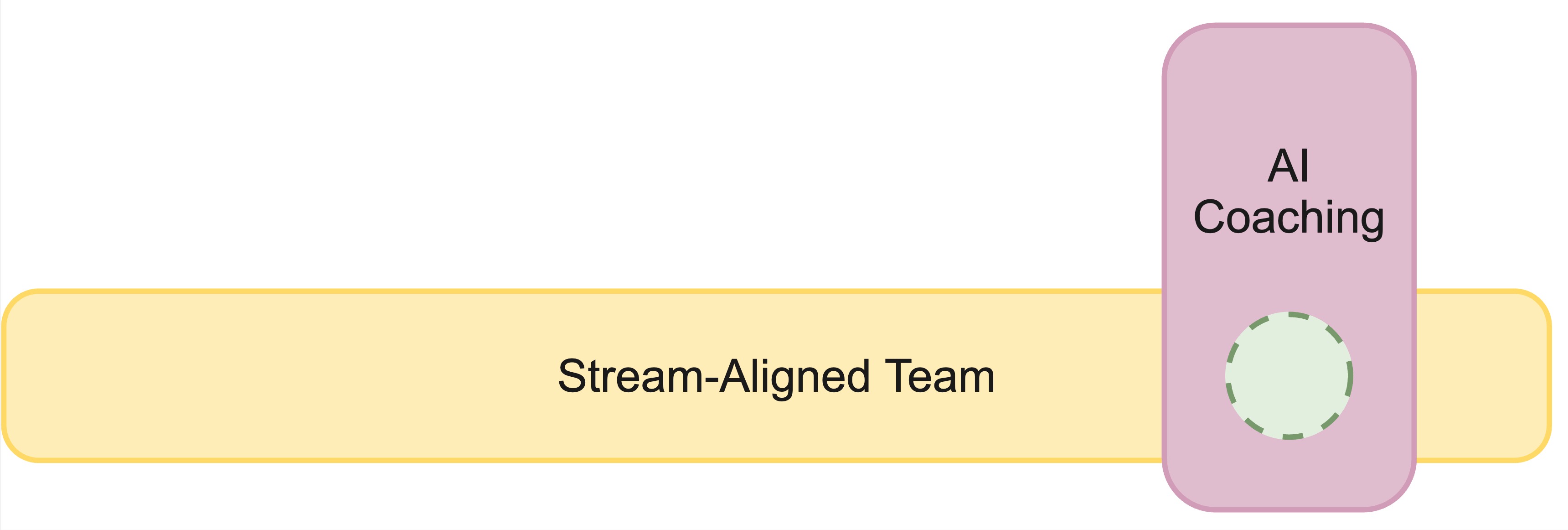The challenge with AI isn’t just the technology. Often it’s how organizations are structured around it. Whether the work involves building internal AI infrastructure or shipping user-facing AI features, the ability to ship depends on how teams are set up and work together.
That’s where Team Topologies comes in because if the org chart is a mess, no amount of machine learning will save it. The following four patterns outline how teams can be organized to support sustainable and effective use of AI.
Complicated Subsystem Team (for Advanced AI Components)
 A subsystem team focusing on a self-hosted LLM
A subsystem team focusing on a self-hosted LLM
When an organization deals with technically complex AI components, a dedicated complicated subsystem team may be required. Examples include self-hosted LLMs with custom training pipelines or recommendation systems. These teams focus on deep expertise while maintaining long-term ownership of AI components.
Platform Team (for AI Infrastructure)
 A platform team providing an LLM access layer
A platform team providing an LLM access layer
The platform team builds and maintains internal AI infrastructure that can be reused across the organization. This includes APIs for model access or prompt management systems. The platform exists to reduce cognitive load for product teams while ensuring alignment with org standards.
Stream-Aligned Teams (with Clear AI Use Cases)
 GenAI Stream Aligned Team
GenAI Stream Aligned Team
These teams own a user-facing product and apply AI to solve concrete problems within that context. They operate autonomously while getting support from enabling and platform teams. AI is not the goal but a means to deliver better outcomes.
Enabling Team (for AI Expertise)
 A stream-aligned team receives AI coaching
A stream-aligned team receives AI coaching
An enabling team provides specialized knowledge in AI domains such as machine learning, prompt engineering or LLM integration. Rather than owning deliverables, it collaborates with stream-aligned or platform teams to build their capabilities. This approach allows AI knowledge to spread without central dependencies.